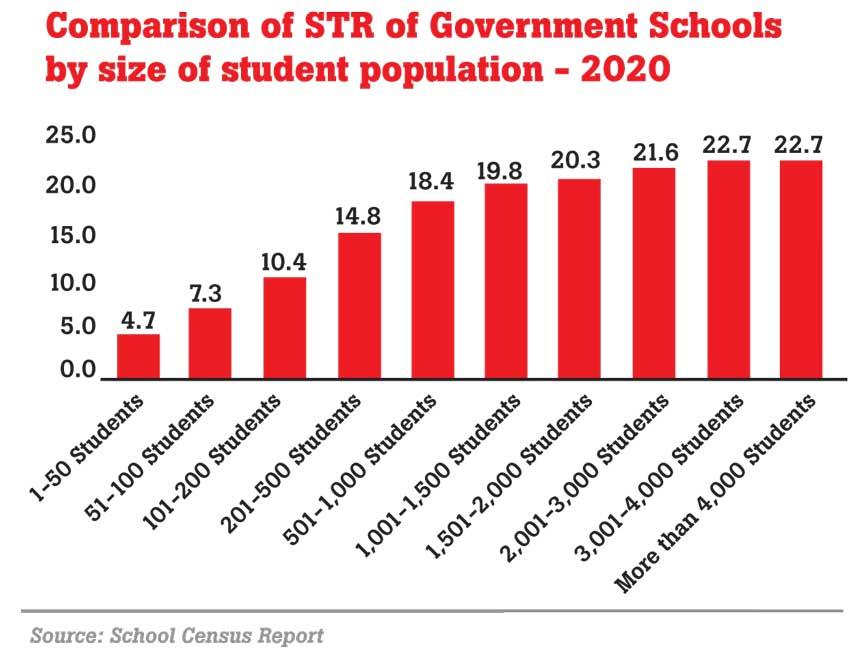30 Jul 2021 - {{hitsCtrl.values.hits}}

The number of students per teacher measured through the Student Teacher Ratio (STR) stood at 16.3 in 2020 at all government schools, little changed from a year earlier, but a growing gap was observed in the ratio depending on the size of the school, identified with the number of students.
According to the latest School Census Report compiled by the Statistics Branch of the Ministry of Education in collaboration with the Department of Census and Statistics, the gross STR in all 10,155 government schools, although slow, has shown a declining trend from 18 percent in 2015 to 16.5 percent in 2019.
According to the census carried out annually, the school-going student population of 4,063,685 in 2020 had 249, 494 teachers across all categories—graduate teachers, trained teachers, trainee teachers, untrained teachers and others. The STR is a key barometer in the quality and the efficacy of a country’s elementary and secondary education systems as there is typically an inverse relationship between the two.
For instance, a higher STR suggests more students per teacher, where the individual attention paid to a student becomes less and thereby calling into question the ability in achieving the desired educational outcomes.
While the national average portrays a more modest picture, in reality there are class rooms, particularly in popular national schools, with students more than three times the national average, and the teacher unions recently renewed their calls to cap the number of students in a class room to 35.
In any case, the past year and half of remote learning has proved less effective and it cannot be a substitute for classroom learning, as it has limited room for effective teacher-student interaction and student-student interaction, which are integral parts of education.
While the national average stands around 16, the STR rises corresponding to the size of the school, which is measured by the number of students.
For instance, the schools with less than 50 students has the lowest STR of 4.7 while the schools above 3,000 students has the highest STR of 22.7, although the STR itself doesn’t say the quality of the education the students in those schools receive.
This is because there could well be cases where in schools with the lowest STRs, may not have the teachers for key subjects such as Math, Science and English, as such schools, mostly stationed in far corners of the island operate with woefully less resources.
After all, the STR masks the individual cases as it only provides an average.
Meanwhile, STR also showed a divergence between the type of the school where the schools with Advanced Level streams have a higher average STR of 19.1 whereas the schools with classes up to grade 11 has lower average STR of 12.2.
Categorised based on the ethnicity of the school, lowest average STR of 13.8 students are found in Tamil schools while the highest of 17, which is not that far from the national average is found in Muslim schools, whereas in Sinhala schools the ratio stands at 16.8.
18 Nov 2024 2 hours ago
18 Nov 2024 3 hours ago
18 Nov 2024 3 hours ago
18 Nov 2024 4 hours ago
18 Nov 2024 8 hours ago